Amish in Colorado: 2023 Guide (Seven Communities)
Though Colorado saw its first Amish in the early 1900s, they have never had a large presence in the state. But a slow-and-steady pattern of settlement may change that. As of 2023, the Amish population of Colorado is around 900 people.
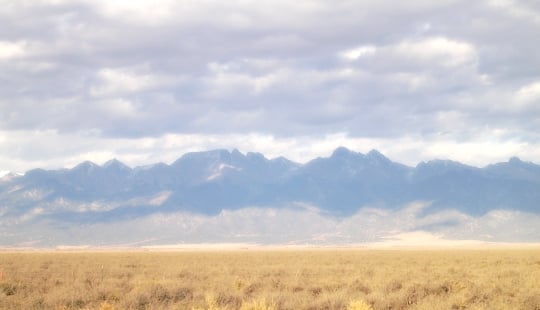
Where do Amish live in Colorado?
Colorado is currently home to seven Amish communities (2023) at the following locations:
- Monte Vista (Rio Grande County)
- La Jara (Conejos County)
- Westcliffe (Custer County)
- Hillside (Fremont County)
- Wetmore (Custer County)
- Crawford (Delta County)
- Alamosa (Carmel County)
Read on for more on these Amish communities.
Colorado Attracts Amish Westward
Population pressures in heavily-settled eastern communities have long caused Amish to seek new opportunities to cheaply acquire farmland. Outside of their homelands in Pennsylvania, Amish have found prime areas for settlement in the Midwest and have also settled in the South (Tennessee, Kentucky) and Northeast (Maine, New York, Ontario).
Western states first attracted settlement in the 1800s, with Amish communities since founded – and later disbanded – in states including Arizona, New Mexico, and Oregon (Settlements That Failed, David Luthy). Colorado has also attracted Amish settlement in the past. But unlike those previously mentioned, it has slowly built and maintained a small but substantial Amish presence.
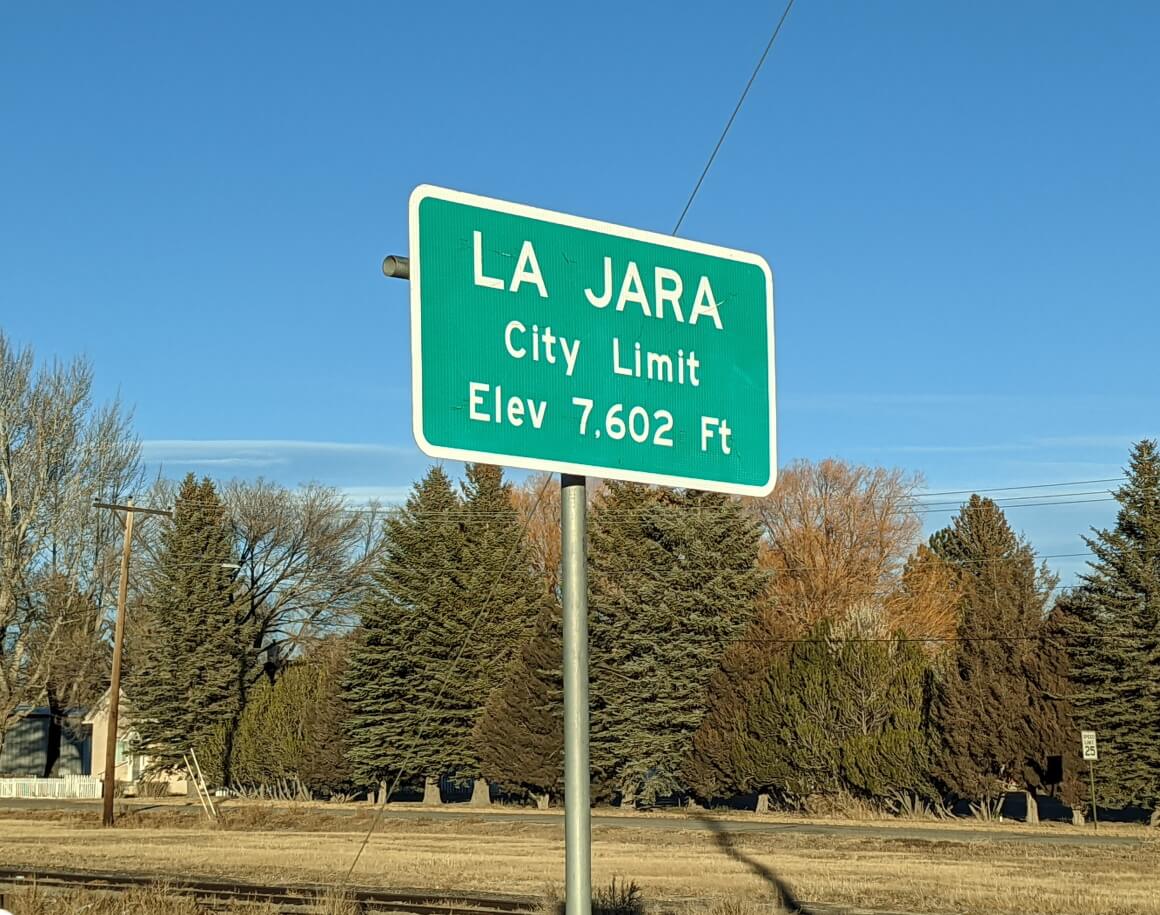
Over the past two decades, Amish have moved into Colorado from both East and West, from communities in states such as Missouri, Montana, Indiana, Oklahoma, and Ohio. The oldest of the current Colorado settlements came about in 2002 in the area of Monte Vista in the San Luis Valley.
Amish Communities in Colorado Today
The Amish in Colorado have focused settlement in two main areas in Colorado – in the San Luis Valley in Southern Colorado, described as “roughly the size of Connecticut” in a Denver Post piece on the communities – and in the area east of the Sangre de Cristo mountain range.
Most Amish settlers to Colorado have found farming conditions different from wetter eastern areas, however. Small business has helped to supplement farming, with Amish involved in furniture making, beekeeping, greenhouses, dog breeding, and tack, among other occupations (“Amish settle in Colorado’s San Luis Valley, diversifying to support families”, Ann Schrader, The Denver Post, August 15, 2010). Read more here about Amish furniture in Colorado.
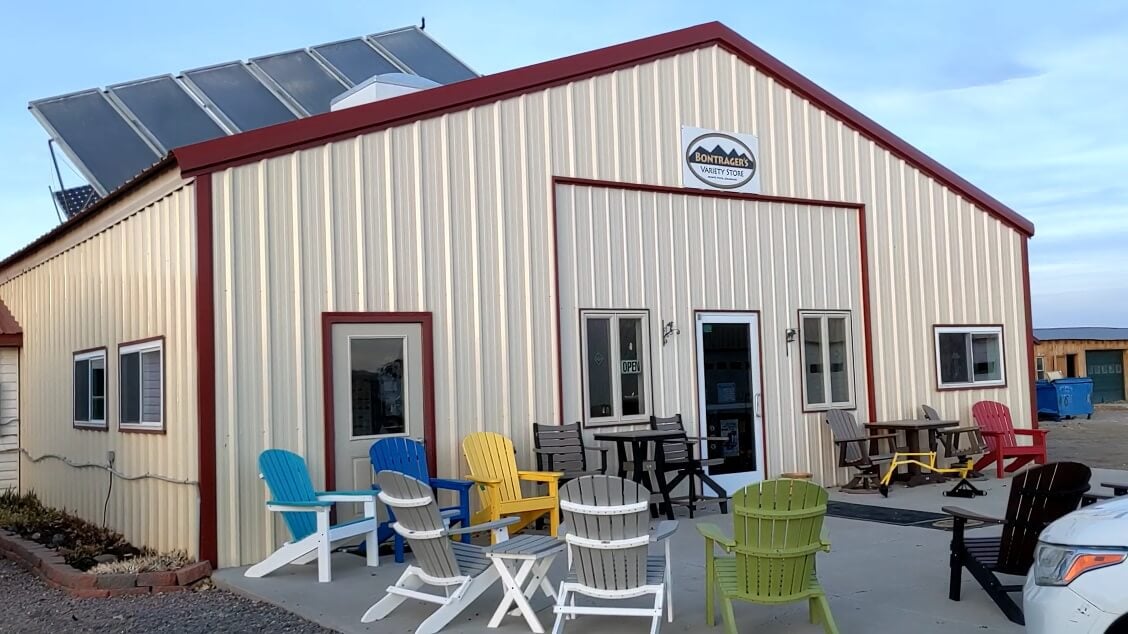
Monte Vista
Colorado’s largest and oldest community is found at Monte Vista in Rio Grande County. Founded in 2002, the Monte Vista settlement today numbers three church districts. Settler Magdalena Troyer described the attraction which inspired the move from her Missouri Amish community to the Centennial State: “We had been wanting a little more room, a change in the environment”…”There was a pull to move to the wild West, I guess you’d call it” (Denver Post).
The Monte Vista settlement numbered around 350 Amish residents as of 2023. Amish here cite the natural beauty and climate as draws to the area. Some come for health reasons. The drier conditions present a challenge for farming however, while land prices in the valley have risen considerably since the settlement’s founding.
La Jara
Other communities include the one at La Jara in Conejos County–also described as the Manassa/Romeo community. This settlement numbered around 210 people in 2023, making it the state’s second-largest. Like Amish elsewhere in Colorado, those in Conejos County derive income from a variety of sources. Some even do piecework for a luxury bootmaker whose product is shipped to Japan and Germany (Denver Post).
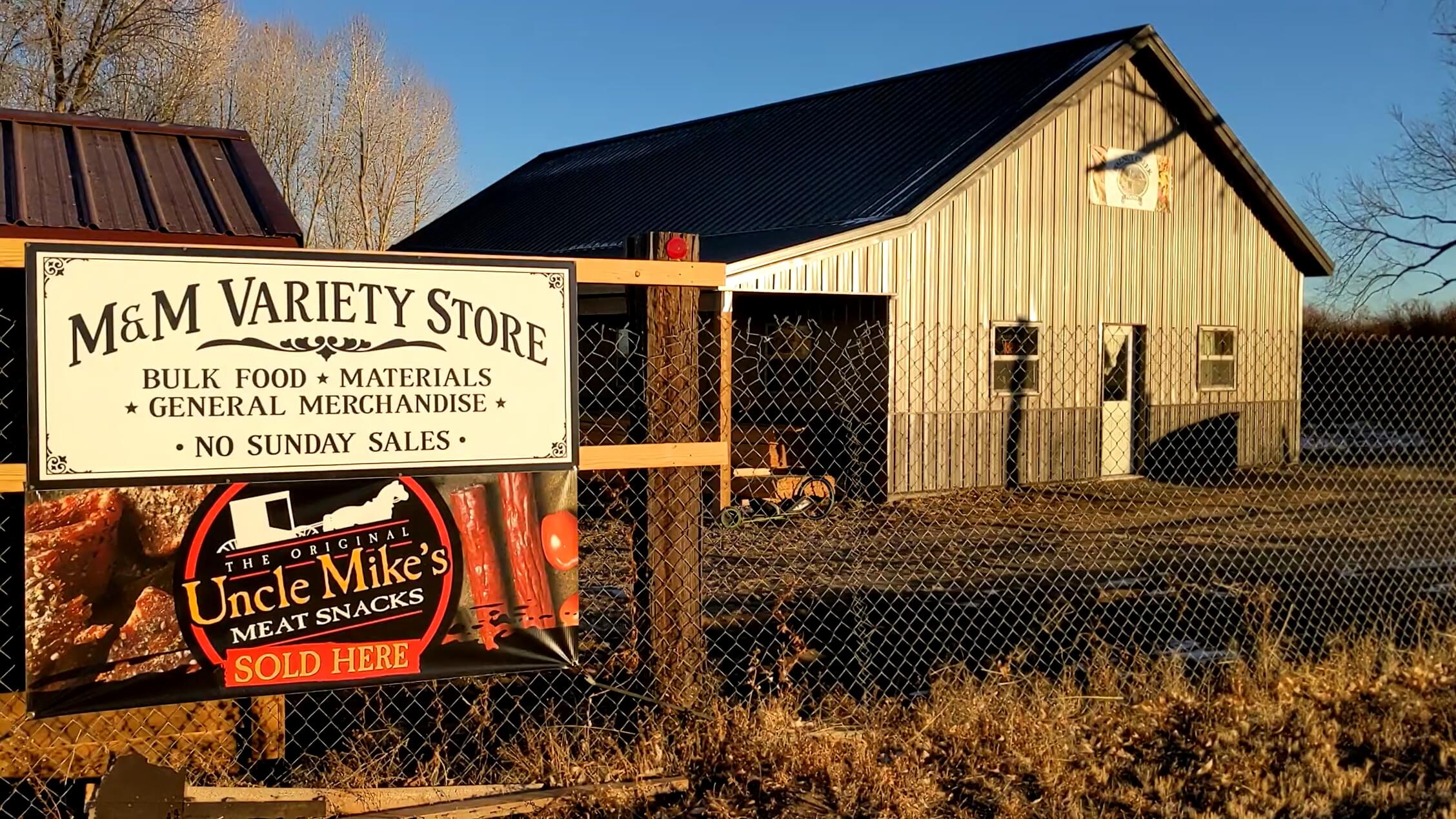
Westcliffe
The settlement at Westcliffe in Custer County was founded in 2008, and stands at around 125 residents over a decade later. The community’s founding can be traced to horse trainer Enos Yoder, formerly of the Bloomfield, Iowa Amish settlement.
According to a 2010 LA Times piece on the community, Yoder had originally visited the area to deliver horses, and “couldn’t get the isolated, unspoiled beauty out of his head.” A few years later, he moved his family to the area (“Westward ho for Amish”, Los Angeles Times, Jenny Deam, June 1, 2010). Among the trades and businesses done by Amish in the area, you’ll find Yoder’s furniture store, selling furniture supplied by Amish from Ohio.
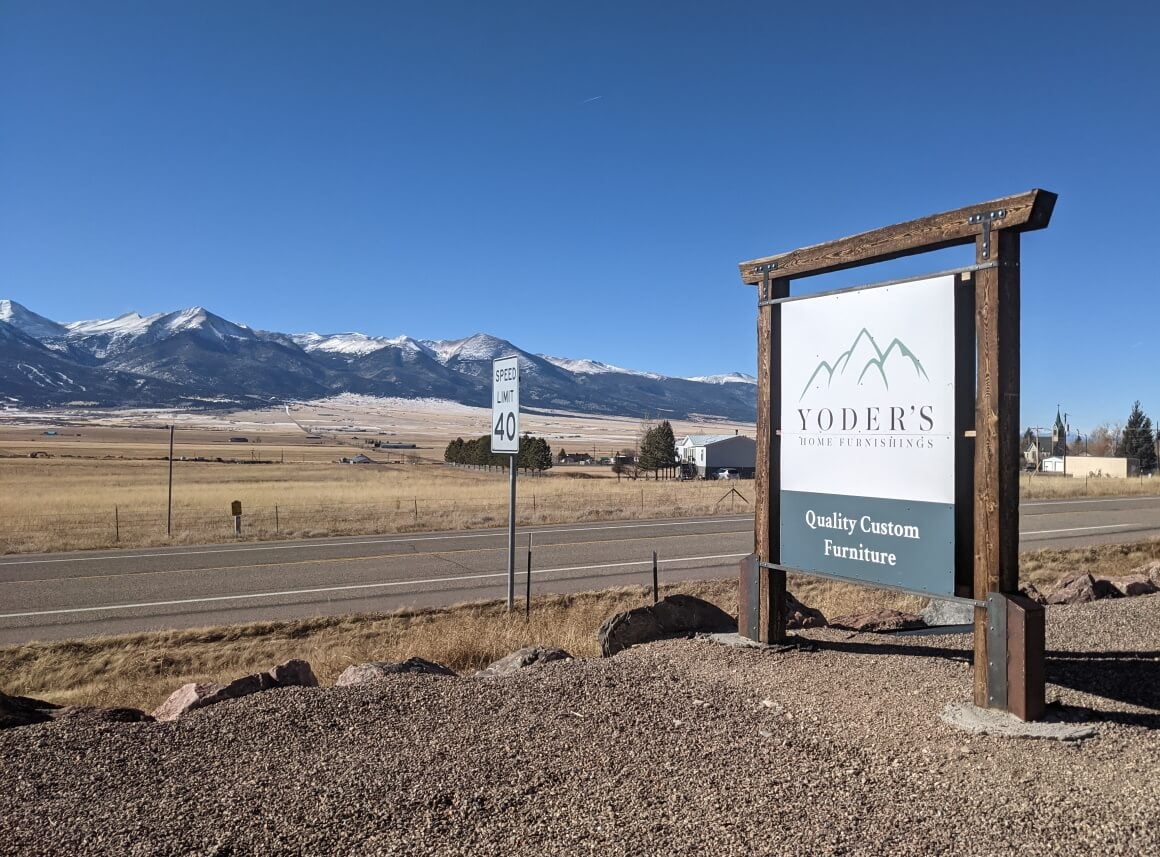
Other Colorado Amish Communities
The remainder of Colorado’s seven Amish communities can be found at nearby Hillside (around 160 people), along with three fledgling settlements at Wetmore (Custer County) and Crawford (Delta County), and Alamosa (Carmel County), all numbering just a handful of households.
Historical Colorado Amish settlements
Colorado has gotten a spell of recent attention as a number of new Amish settlements have been founded by Amish mainly from the East. Interestingly, a similar phenomenon occurred around 100 years ago when Amish founded three Colorado settlements within two years. For various reasons, none of these communities lasted much longer than a decade.
Elbert County
Though it is likely scattered Amish may have lived in the state prior to formally founding a community, the first bona fide Colorado Amish settlement was founded in Elbert County in 1909 near the town of Limon (itself in Lincoln County) (see The Amish in America: Settlements that Failed 1840-1960, David Luthy).
David Luthy reports that over the years of its existence, the Limon settlement struggled with church dissension and lack of ministry, with the community’s Amish writing letters to the Sugarcreek Budget entreating other ministers to visit to hold church. Services were sporadic and communion was not held for much of the existence of the settlement. Some Amish from this community ended up becoming part of a Mennonite congregation, while the last Amish had left by 1920 (Settlements that Failed, pp. 49-55).
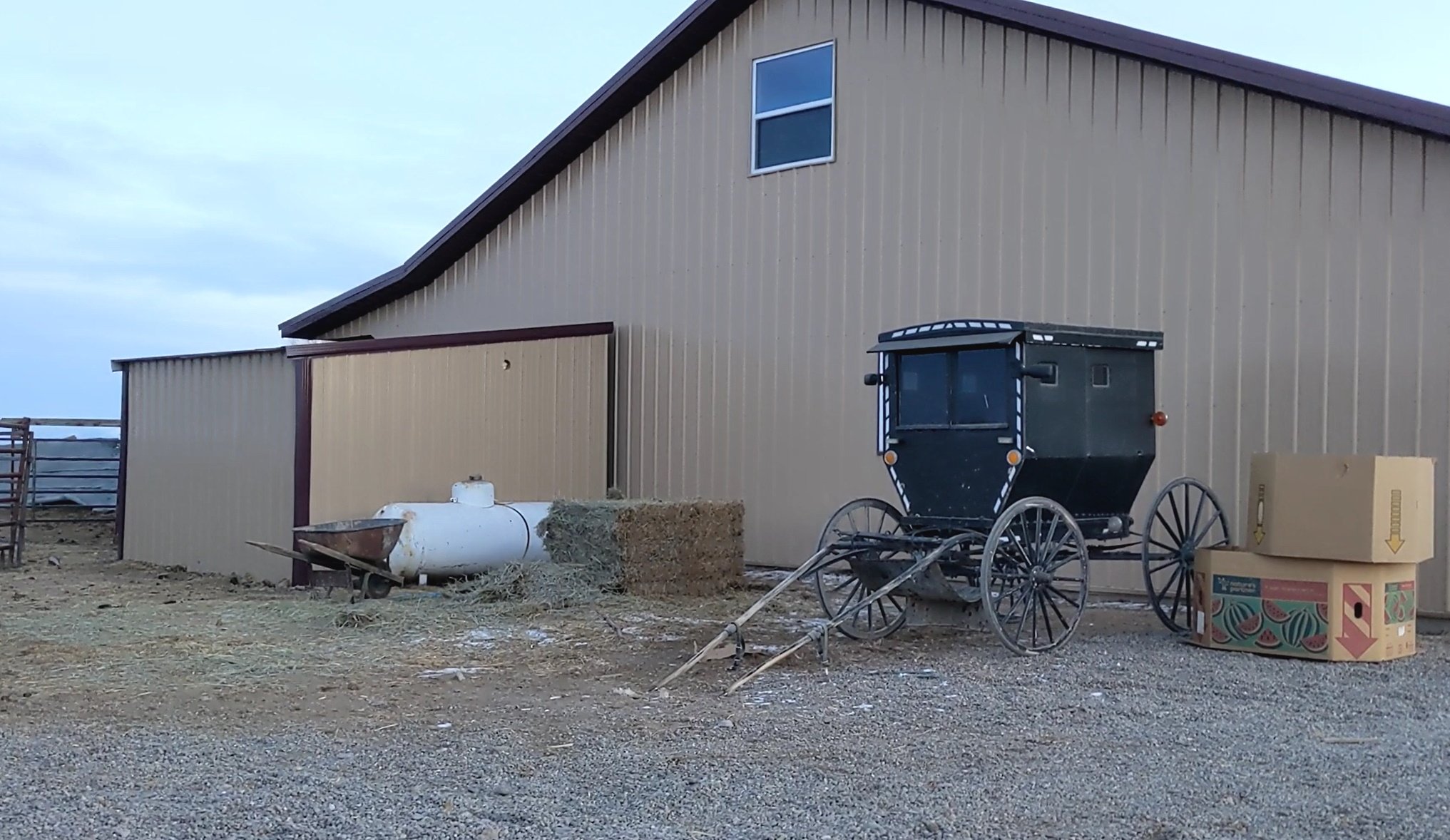
Cheyenne County
A second settlement, and the shortest lived of the three, was started in 1909 near the town of Wild Horse in Cheyenne County. “Colorado fever” had struck Amish in existing settlements in places such as North Dakota and Oklahoma, and Amish began arriving by the train car-load, with at least 30 settlers and their families coming to live in the eastern Colorado county.
Unfortunately, the Wild Horse Amish faced a number of challenges including drought, prairie fires, wind and hail storms, and disease. Soon after the settlement was founded, Amish were already moving away – even as newcomers continued to arrive. The last Amish household had folded and left by 1914. Luthy speculates that “Perhaps no other Amish settlement grew so quickly and died so soon as Wild Horse, Colorado.” (Settlements that Failed, pp. 55-59).
Crowley County
The third settlement, that near Ordway in Crowley County, was originally intended to be be located near a town named Dayton. Dayton is today remembered as a “dream town” – a planned settlement organized and promoted by land agents, but which never materialized.
Luthy notes that due to the influx of Amish into nearby Cheyenne and Ebert Conties, land agents decided to target Amish as well. In contrast to those settlements, however, the Ordway area was well-irrigated and more promising in terms of the range of crops which could be grown, as the area supported a variety of fruit trees and vegetables.
Luthy explains that in operating their farms “it was common for the Ordway settlement to get seasonal workers from other Amish settlements, especially the group living near Wild Horse”. Alfalfa, sugar beets, and cantaloupes were among the cash crops grown by Amish here. Over time, the settlement dwindled, and by 1917 had ceased to exist. This was due to two problems that proved formidable: irregular irrigation, and typhoid fever (Settlements that Failed, pp. 59-65). For more, see this article on the Ordway Colorado Amish settlement.
The Future of Amish in Colorado
The early Amish settlements in Colorado all failed soon after founding. Amish churches are subject to a number of pressures including financial pressures, lack of ministry, and religious differences. How will today’s Colorado Amish communities fare long-term?
The area with Colorado’s largest concentration of Amish, the San Luis Valley, is known to be an economically-depressed region. Additionally, farming is not such an immediately viable option, with only a fraction of the rain as received in most eastern Amish settlements.
However, with improved technology, and the rise of alternative occupations such as small business and working for non-Amish employers more common, Amish communities in Colorado’s San Luis Valley look to have a better shot of surviving than their predecessors from a century ago.
Amish in other regions of the state have also proven themselves to have staying power, despite living far from most other Amish settlements. Two decades after the first of the current Amish settlers first arrived here, it seems that the Amish presence has proven itself to be longer-lasting than prior attempts to settle the Centennial State.
For further information, see:
“Amish Population in the United States by State and County, 2023” (https://groups.etown.edu/amishstudies/files/2023/08/Amish-Pop-2023_by-state-and-county.pdf)
“Amish Population, 2023”. Young Center for Anabaptist and Pietist Studies, Elizabethtown College (https://groups.etown.edu/amishstudies/statistics/population-2023/)
“Amish settle in Colorado’s San Luis Valley, diversifying to support families”, Ann Schrader, The Denver Post, August 15, 2010
“Westward ho for Amish”, Los Angeles Times, Jenny Deam, June 1, 2010
The New American Almanac, Raber’s Bookstore (Baltic, Ohio), Ben J. Raber
The Amish in America: Settlements that Failed, 1840-1960, David Luthy
Colorado Amish photo credit (San Luis Valley): Derek Markham



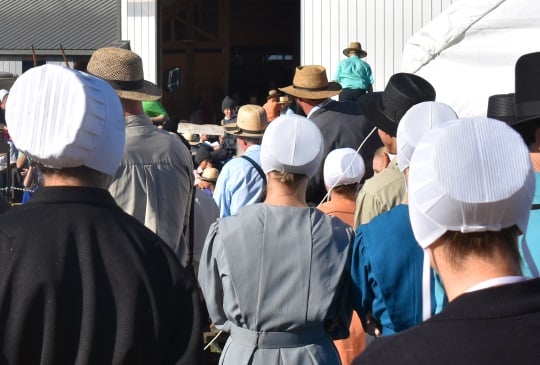
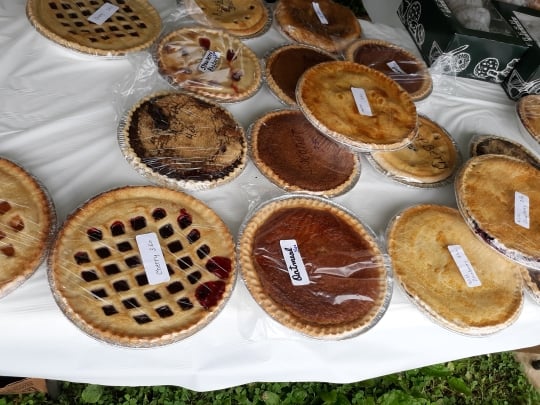
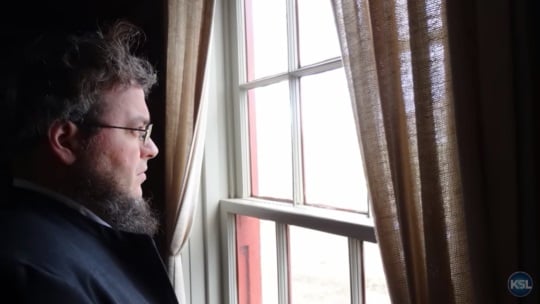
Interested
Hi,
I am interested in learning more about the Amish people, your beliefs, and the possibility of visiting or even living in one of your communities.
I am looking for a pure, simple, peaceful way of life. My phone number is 1-719-221-0226. I am presently in South Fork, Co.
May God’s greatest blessings be present in every aspect of your lives.
Thank you,
Will Omega
You do know that Amish don’t use the internet…
Internet
I beg to differ, as Mark from Holmes Co. IS Amish and DOES use the internet!
And so am I.Old-order Amish and use internet.
Can you help with a community in elpaso/elbert
A place where there is lush farm land secluded by
Hills that hide from the city. This area is a farming community. We would love to help start a community that have the same beliefs, values and kinship. My wife and I both raised near PA Amish and love the life. We alwaey prayed to be in a place as such. We however do believe in the English version to help others understand the word of God. We believe in Shepherds but we also believe those shepherds to act strictly by Gods word. The Colorado Amish is needed in this world today. We use modern technology just to find facts of what is neccessary and to help to flurrish to sustain our living. We believe we need a communit close. We hope we can help others. This is a beautiful place of God and not a desert. The ground is blessed with water and fertile soil. Perfect to sustain the life of the Amish.
Please help us to help others to find their way!
We shall help in any way possible if its Gods will.
Looking for community to join
Hello, I’ve been interested in living with the amish community for years now. If anyone has any information I’d be extremely grateful. Thank you.
Elders
How do i get in touch with the elders?i am near burlington Colorado..i am willing to travel..i know the custer and freemont county area well..
Hi
I would like to connect with the Amish woman’s circle in Colorado, can u be of any help
Elders
How would i get in touch with the elders of the church?
To become Amish
Would love the elders call me please 720-680-5166
Kiki is right. There are Amish groups who would never think of using a computer, some who have smart-phones and a lot of variety in-between. I do not have a computer at home or a cell phone, but I work in an office most of the time and I do use the internet while I am at work. (I spend a fair chunk of my day seeing to business emails. My work-place is not Amish owned, if it was, there would be no internet) as well as using the computer at our local library, where you can often find Amish folks on-line for some reason or another. I often see Amish folks at the local library ordering things online or looking things up.
Technology
It is true that the old order does not use internet or telephones however the land has been minimized and cut into our ability to just farm any longer therefore we must adapt in some ways. I also do not have a phone in my home. I do however us technology to sell my services and to connect with others that are now spread throughout the country. My Flau stays home for her duties on the farm (gardening, cooking, taking care of the animals) as i no longer can survive by doing that alone. This is the reason why we need our communities to join. Many have been ex communicated due to reading the English version regardless that they are actually reasing the bible. Many bishops have become more off idols. Is this Gods word? In the bible it says nothing of technology use nor does it say to bow or praise anyone but God. Sinners we are but we pray fo r forgiveness and blessings. I no longer fear death afyer reading the English version What i do fear is that to many judge when the holy book specifically says that we “shall not judge”.
We live the best we can in this world as its become. We need each othet for strength, friendship and stewardship. If its through technology so be it. Jesus died on the cross for our sins. If the use of technology is so bad and as bad as taking anothers life (as some orders state) then Jesus has already covered our sin. We repent when we do believe we sin and it is forgiven by God, this comes directly from the bible. As he is a forgiving God and i para quote “if anyone here has never sinned throw the first stone. All dropped their stones. He touched the women on the head and said “sin no more No be on yoir way”
Amish Culture History
An excellent resource to learn more about the Amish culture: “The Riddle of Amish Culture” by Donald B. Kraybill.
Carpentry
We are very interested in talking to someone about a small log cabin that some in your community builds. Please write us or call us , we would drive out to talk to you and place an order. We will set up pick up and delivery. Our # is 719-661-0066 Thank You Cathy
For a cabin check with ProShed. They can do quality building to your specs and size. Call 719-852-4800 and ask for Edwin or Timothy.
Hey,
I do not know if you are able to reply VIA email, however I would hope to hear from ya’ll one way or another, probably through a reply to this comment as I do not trust putting a phone # or email out for every one to see…
Anyways, I suppose my reason for this is that I am quite intrigued as to the way of living that ya’ll have chosen. Though I don’t expect a responce I will most likly cheak back in roughly a month.
I live between the Monte Vista and Manassa communties and have met some of these folks. I was lucky to find that one family was cousin to a family I knew in Holmes County!
question for you Lynn B
Since you live in the area, I am hoping you can tell me where I can find a map to the Amish community business near La Jara (the bakery in particular!)
Thanks for any reply.
I live in Colorado and only knew about the settlements in the valley, so thanks for educating me. We have been wanting a good weekend to go down there and visit.
Very interesting reading! Thanks, Erik!
Farm for sale 600 acres
Our farm is located in Hanover, not Colorado Springs, CO.We have a 600 acres for sale in 3 lots: 160 acres which is irrigated with a pivot and a side roll, has 3 homes, huge hay barn, horse barn, garage,7 stall loafing shed, silo, etc. We also have 280 acres with water and one 160 acre (no water) next to it, those 2 lots are about 3 miles from this home.
We live on a dead end road, which is gravel, and Chico Basin Ranch and their 100,000 acre ranch is across the street. There is no building of homes allowed.
We are asking $1,2M firm which includes all the farm equipment.
Please contact me for further information or to arrange for a visit.
Thank you,
Regina A. Cranmer
Water
Does this have a cistern? How large
Yoder, Colorado
I saw somewhere that there is a small population of Amish in Yoder, Colorado, just East of Colorado Springs. Where can I find out more info about the community. I just visited Amish communities in Ohio when I was back ther visiting relatives for Aunts 100th birthday. I love the people. They are so sweet and gracious.
Yoder
If you find out please let us knowWe are not far at all. We are in Peyton/elbert and are hoping to gain some Amish neighbors to grow our community in the name of God
Yoder is very dry but where we are is a mass of lush farm land.
cor cutter,bundler
this machine is about 112 years old works wonderfull
i would like to see it go to a good home it works super great
please contack me dave.sanchez@live.com
thank you
Colorado Amish
I’d like to visit the Amish in Colorado. Is that possible? Anyone know where exactly, they reside in the state?
Colorado Amish
The Budget newspaper has Amish listed in the following places in Colorado: Grand Junction, Lajara, Monte Vista, and Westcliffe
Amish in Colorado
I heard that there is an Amish comunity East of Colorado Springs called Yoder. Not sure cause I haven’t had chance to get over there.
Love Pliny to build s home in Western Washington 5 years
I am interested in finding out if there are any builders that would be willing to build a custom home in about 5 years. Please feel free to mail me information on how to contact a builder. I am interested in what it entails. My husband and I have been very determined to make our dream home possible and we desire the quality craftsmanship that the Amish can provide. Thank you.
2015 Monte Vista Auction
I am looking for the dates for the Amish School Auction in Monte Vista.
Thank You.
Monte Vista Amish School Auction
Deena, it seems that the 7th Annual Monte Vista Amish School Consignment Auction was held Saturday, June 6, presumably 2015.
http://shop.fourcornersmarketplace.com/durango-co/view/monte-vista-amish-school/huge-consignment-auction/22734333
Buggy Repairs?
I am looking for an Amish community that has a buggy shop. I have an Amish buggy that needs wheel repair.
Thanks
Zack
I’m sorry, I’m looking for this as close to Denver, CO as possible.
Thanks
Zack
Buggy shop Colorado
Zach, below are two links with information in the U.S., but only some are Amish. If you would contact Wana Wheels, maybe they would know of someone closer to you.
Wana Wheels, LLC
Calvin Gingerich, 2745 N 850 W, Shipshewana, IN, 46565
phone: 260-768-7036
fax: 260-768-3205
Wagon and buggy wheels, shafts, eveners and neck yokes
http://ruralheritage.com/Evener/index.htm#vehicles
(Rural Heritage, Online Evener Directory, Vehicles/Wheelwrights)
http://www.caaonline.com/caa_content.asp?PageType=Dept&Key=6&MType=WH&MTypeDesc=Wheelwrights
(Carriage Association of America, services and suppliers)
Buggy repair
I have a very well kept old wagon that may be of use for repair of yoir buggy. What is wrong? Please email me familyheating@aol.com
Please excuse any delay i only use technology for work and to connect to local communities
Horses/buggies used by CO Amish?`
Hi!
I’m an Orthodox Christian and am so fascinated by the Amish lifestyle; I love doing things the old ways.
My husband and I will be moving to southern Oregon and wondered if the Amish in CO use the horse and buggy to get around there. I wanted to learn to use a mule and buggy but it’s difficult in OR where the roads have no shoulders. How do the Amish deal with road conditions like this and is CO more difficult than the eastern states in this matter?
Thanks and God continue to bless and keep you all!
kiki
Kiki yes the Amish communities listed above all use the horse and buggy (they are considered Old Order). On roads with no shoulders, buggies simply ride on the road.
Caring Craftsmen Wanted to Complete a House in Steamboat Springs, Colorado
I am assisting a senior finish a modular house that needs decks, balconies, and interior carpentry as well as the construction of a garage and utility room connecting the house to the garage. The property has an existing house that can be lived in while the work on the new house progresses. However, the existing house needs internal and external repair work before it can be used for temporary housing. The older gentleman I am helping has high quality standards for carpentry work and has been discouraged by the lack of skilled craftsmen in the marketplace today. If anyone is interested, please call me at 719.546.0761 or 719.240.4637 Cell.
Page for New Amish in Colorado to gather
https://m.facebook.com/The-New-Amish-Colorado-1212980185548982/
Looking for people that live with God
I I’m a 53 year old married man with a new born. Been a nurse 25 years, God has opened my eyes and He has been teaching me the law and life I must live. I quit working in the medical field for obedience to my Lord. Our souls need fellowship.
Mobile home removal
I am looking for someone to demolish and remove a mobile home trailer for me in Del Norte CO. Please message me. Thank you!
Looking to Hire Amish Woodcrafter for wholesale wood product production.
We currently have business partners who order wood crafts from a wonderful Amish man in the East US… we are looking to find someone closer to NM & CO to make some of these crafts at wholesale.
Looking for Corgi Breeder
I was told about a corgi breeder in the Amish community. So far I haven’t been able to figure out how to contact them. Is there any information to be shared?
Thank you,
Tricia
Westcliffe - Bull Domingo
I am looking for a small property around Bull Domingo. I am a English style saddler and have more work than I can manage at my age. I would like to pass some work and expertise to someone who can work with their hands. I do everything by hand and always have. Ideally, I would like to find a property (I am working on that) near an individual or individuals who are interested in my area of expertise. It is important to pass skills along but most apprentices I’ve had in the Front Range are not good with their hands. Someone out there will know what I mean.
Amish domestic help?
Hi, I am a totally overwhelmed and completely burned out stay at home mom of 8….(including three year old twin boys) and would love if anyone knows how I could go about hiring a live-in Amish helper for a year or so. I don’t live close to any Amish communities, so just day help wouldn’t work out. I thought maybe a young woman who is in rumpspringa (probably misspelled that!) or even better, a widow whose kids have all grown? I want the help, but more importantly I’d love the wholesome influence and skill training for myself and my kids. The Amish seem to know how to do big families and I find I am drowning! I would love to have their wisdom taught to me and the Amish spirit of cooperation taught to my kids. My husband runs a construction company, so we could even do a brother and sister or young husband and wife, if that seemed safer. We are religious, but would totally respect their beliefs and would seek more to learn from than to influence. I’m hoping it could be a win-win situation for the right person. Anyway, if anyone has any ideas on how to go about posting an ad or finding help, please message or text me. My number is 801-755-5058, and my email is lvhassell@gmail.com.
Looking for skilled craftsman
I have an original settlement home from the early 1900’s on my property near Pagosa Springs that I would like to do some work on. It is in surprisingly good shape and comepletely livable as is, but interested in fixing the home up to be very nice. There seems to be a lack of skilled carpenters in the immediate area and I was wondering if this was a good task for someone with interest and experience. I have two other homes there where people can live while the project is going on. If this is of interest please contact me I can be reached at 713. 249.6463
God Bless
Hi,
I would like to get to meet some Amish ladies and teach them Crochet and Knitting skills, I am sure they all know how to do this. Please email me at mingr1942@aol.com or call me at 4077489397. I love the way the Amish have a way of living and their concerns for Living the Christ would want them to live. Hope to hear from someone soon.
I HAVE A FRIEND WHO IS IN HIS EARLY 60S WHO CLAIMS TO BE AMISH
ANYWAYS HE CAME TO BOULDER COLORADO MANY YEARS AGO WITH OR FOLLOWING FRIENDS AND LIKE SO MANY WHO COME HERE THEY CALL IT THE CURSE OF CHIEF LEFT HAND , REAL NAME WAS NIWOT. HE COULD NOT LEAVE AND WHEN HE TRIED LIKE SO MANY HE ENDED RIGHT BACK HERE JUST AS THE CURSE SAYS . HE’S ALWAYS WORKED AS JUST A LABORER OR CARPENTER . I THINK YOU GREW UP NEAR LANCASTER PENNSYLVANIA BUT ANYWAYS COME IN HERE HE ALSO CAME WITH MENTAL PROBLEMS DUE TO THE FACT HE HAD SO MANY SISTERS AND ANTS AND BEING THE YOUNGEST OR SECOND YOUNGEST ALWAYS HAVING BEEN PICKED ON GREW UP I THINK HATING WOMEN OR AT LEAST DISTRUSTING I’VE HAD TO LISTEN TO HIS STUFF ABOUT WOMEN FOR YEARS BUT BUT BUT HE VERY MUCH WANTS TO BE MARRIED PREFERABLY TO A AMISH WOMAN ♀️ BUT IT IS VERY HARD TO GET HIM INTO A CAR AND I DON’T KNOW HOW TO GET HIM TO A PLACE WHERE HE COULD MEET SOME AMISH PEOPLE THAT MIGHT LEAD TO A RECOMMENDATION TO A WOMAN THAT MIGHT BECOME HIS WIFE SOMEONE WHO DOESN’T MIND THE FACT THAT HE IS POOR HE ALWAYS TALKS ABOUT NOT HAVING THE MONEY TO SUPPORT A WIFE THAT I THINK THE PROBLEM IS HE’S BEEN DISENFRANCHISED SO FOR SO LONG SEPARATED FROM HIS OWN KIND OF PEOPLE THAT’S WHY HE NEVER FOUND A WIFE BUT IN MANY WAYS HE IS A REAL SWEETHEART AND THOUGH HE HAS POST-TRAUMATIC STRESS FROM A CAR ACCIDENT AND I’M ALMOST A TRAIN WRECK THE STRUGGLES OVERCOMING WHAT HIS SISTERS DID TO HIM I HAVE ANOTHER FRIEND WHO SAYS ONE OF HIS SONS IS DESTINED TO GROW UP TO BE LIKE JOHN AS HE’S PINCHED BETWEEN THREE OLDER SISTERS AND ONE YOUNGER SISTER YET HE THINKS THE YOUNGEST SON WHO IS THE YOUNGER SON OF A FAMILY WILL DO ALL RIGHT BUT NOT THIS ONE WHO’S PINCHED ANYWAYS SOMEONE PLEASE CONTACT ME MY PHONE NUMBER IS DAVID GRENIS BEST TO TEXT ME FIRST WITH YOUR NAME AND IN CONTACT INFORMATION AT 970-308-4525 ADDRESS HERE 2044 MAPLETON BOULDER COLORADO AND THIS IS ABOUT MY FRIEND JOHN DAVIS THAT COULD BE ANY ONE WHO KNOWS OR HAS A SISTER OR IS A SINGLE WOMAN ANY COMBINATION THAT WOULD LEAD TO MY BEING ABLE TO INTRODUCE JOHN EITHER TO YOU OR THROUGH YOU TO A WOMAN WHO REALLY WANTS TO GET MARRIED. AND DOESN’T MIND HAVING JUST A HARD-WORKING LABOR FOR A HUSBAND . THANK YOU. ALSO I THINK HE WILL DO MUCH BETTER IF HE GETS OUT OF BOULDER COLORADO BECAUSE IT IS SO EXPENSIVE TO LIVE HERE AND HE REALLY DOES NOT FIT HERE
Treadle sewing machine
I have my Greatgrandmother’s treadle sewing machine which still works. I would like for someone to have it who will use it to honor her memory. Do the old order Amish still use these in their homes? If so, please let me know who to contact about this machine?
Amish dreams
I’m thinking of converting to Amish life. Anybody have any recommendations?
While living in Kentucky I had the pleasure of buying from several Amish families. They were pleasant and honest. I made friends with a lady named Katie. She lived near Sonora, I believe. Slightly younger than me but we shared so many experiences. I grew up in the Sandhills of Nebraska where my father struggled to make a living. I wish I had had the opportunity to tell her goodbye.